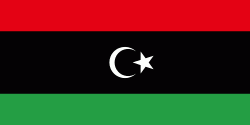Jufra District (Al Jufrah)
In 2012, the total population in the region was estimated at 157,747 with 150,353 Libyans. The average size of the household in the country was evaluated at 6.9, while the average household size of non-Libyans was established at 3.7. There were totally 22,713 households in the district, with 20,907 Libyan ones. The population density of the district was 1.86 persons per km2. Per 2006 census, there were totally 20,127 economically active people in the district.
The surrounding area of the three oases in the Jufra district (Sukna, Hun and Waddan) feature the majority of modern activity and traces of ancient occupation. The oases facilitate access to water and thus are natural concentrations of life. This chain of oases consist of substantial archaeology of several types and periods. The area, which was until recently under-studied is subject to the Trans-Saharan project, which in collaboration with the EAMENA work to identify (through satellite imagery analysis) and record a range of archaeological sites in the Jufra district. 86 individual sites were identified and include settlements, cairn cemeteries, field systems and foggara. These sites enable us to establish an initial chronology ranging from the first millennium BC to early modern times and develop our understanding of the occupation periods in different areas. The sites are endangered from a number of threats, most notably from construction and cultivation.
Jufra is part of Fezzen geographical division of Libya and is mostly full of deserts. The region receives an annual rainfall of 2.5 in. There are no perennial rivers in the region, but the region is abundant with groundwater aquifers. Libya has mostly a flat undulating plain and occasional plateau, with an average elevation of around 423 m. Around 91 per cent of the land is covered by desert, with only 8.8 per cent agricultural land (with only 1% arable lands) and 0.1 per cent of forests. The major resources are petroleum, gypsum and natural gas. Dust storms lasting four to eight days are common during Spring. Vast Haruj volcanic field is largest geographic features, visible from space.
Map - Jufra District (Al Jufrah)
Map
Country - Libya
 |
 |
| Flag of Libya | |
Libya has been inhabited by Berbers since the late Bronze Age as descendants from Iberomaurusian and Capsian cultures. In classical antiquity, the Phoenicians established city-states and trading posts in western Libya, while several Greek cities were established in the East. Parts of Libya were variously ruled by Carthaginians, Persians, and Greeks before the entire region becoming a part of the Roman Empire. Libya was an early center of Christianity. After the fall of the Western Roman Empire, the area of Libya was mostly occupied by the Vandals until the 7th century when invasions brought Islam to the region. In the 16th century, the Spanish Empire and the Knights of St John occupied Tripoli until Ottoman rule began in 1551. Libya was involved in the Barbary Wars of the 18th and 19th centuries. Ottoman rule continued until the Italo-Turkish War, which resulted in the Italian occupation of Libya and the establishment of two colonies, Italian Tripolitania and Italian Cyrenaica (1911–1934), later unified in the Italian Libya colony from 1934 to 1943.
Currency / Language
| ISO | Currency | Symbol | Significant figures |
|---|---|---|---|
| LYD | Libyan dinar | لد | 3 |
| ISO | Language |
|---|---|
| AR | Arabic language |
| EN | English language |
| IT | Italian language |















